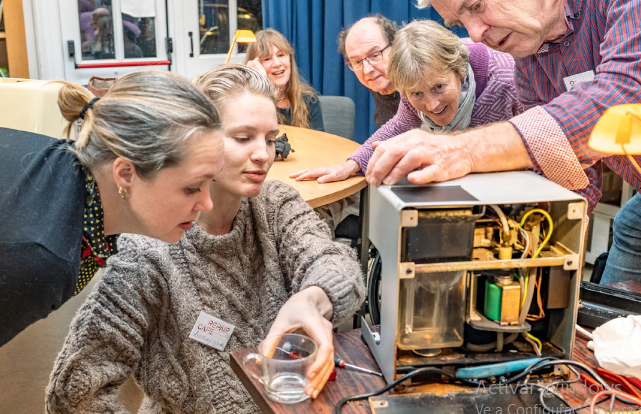
This year, October 19 marks International Repair Day. The Open Repair Alliance (ORA) has presented the key findings of its latest report, based on data from community repair initiatives. The study is built on approximately 208,000 records of attempts to repair electronic devices. Since the arrival of the first Repair Cafés in 2009, these initiatives have been continuously growing. In the past year alone, ORA has recorded nearly 70,000 repair attempts, demonstrating that people are willing to extend the lifespan of their products—provided they have the spaces and resources to do so.
The data: What gets repaired?
Some of the most frequently attempted repairs involve vacuum cleaners (16,056), lamps (13,782), and coffee machines (12,426). Lamps, in particular, have the highest success rate, with 70% of successful repairs, followed by sewing machines and hair dryers. Conversely, devices such as video cameras and screens have the lowest repair rates. Their success rates fall below 40%, highlighting the fact that many electronic devices are designed without repairability in mind.
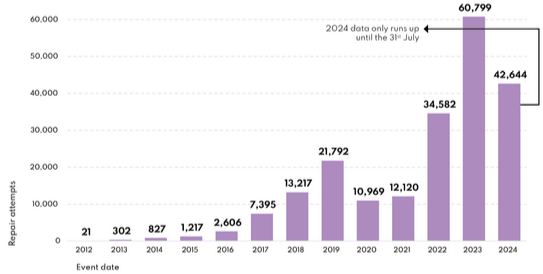
Obstacles: design, spare parts, and their exorbitant price.
According to the collected data, a only 53% of repair cases are successful. This figure shows the main obstacle of repairs: spare parts. In 25% of cases, repairs are not possible due to a lack of spare parts, and in 18% it is due to the high price of these parts. Many companies sell spare parts at exorbitant prices, discouraging repairs by making it cheaper to buy a new product instead. Additionally, another 16% of products have a design that makes them practically irreparable, since they cannot be opened or disassembled. The ORA report proves the need for a more robust legislation that forces the market to facilitate repairs instead of making them more difficult. To tackle this problem, a legislative framework is needed that protects consumers’ rights to repair.
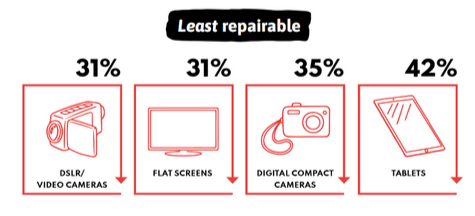
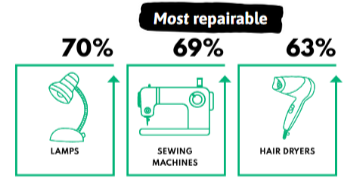
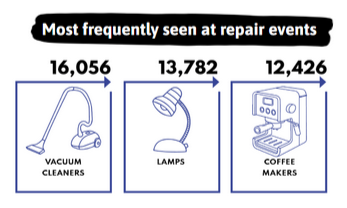
Of the more than 208,000 recorded repair attempts at Repair Cafés, only 40 products (0.0002%) are covered by the new European Directive of 2024. This is because the product categories covered so far only involve televisions and household appliances. Moreover, the only products on the European market that are already being sold under the repairability requirements of the eco-design legislation are those models introduced after the 1st of March 2021.
As for smartphones and tablets, the new regulation improving their repairability will not take effect until June 2025, and it will only apply to new models. This leaves a significant gap in the repairability of most everyday electronic devices, especially those purchased before the law comes into force.
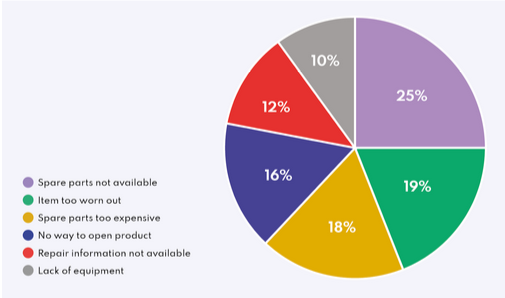
People have the will to repair
However, the ORA report also reveals that people people participating in voluntary repair activities do everything in their power to keep their products in use for as long as possible. While smartphones, the main victims of planned obsolescence, arrive at repair events with an average of less than 5 years, other devices last much longer than expected. Laptops, tablets and headphones are usually used for up to 10 years, hair dryers and consoles can last up to 15 years, and some sewing machines and watches exceed the 25-year mark. This implies that most products are used for much longer than the 10 years of repair support included in the current European legislation, which underlines the need to extend the availability of affordable spare parts beyond the current period in order to meet the existing demand.
Community repair is not just about fixing broken devices, it involves changing our relationship with the devices themselves. Repair should be normalized, accessible, and affordable so that it becomes the first choice for consumers. Shifting our perspective as a society can help foster a culture of responsibility and sustainability. This report makes it clear that many people are already willing to repair—now, it’s just a matter of making it possible.

